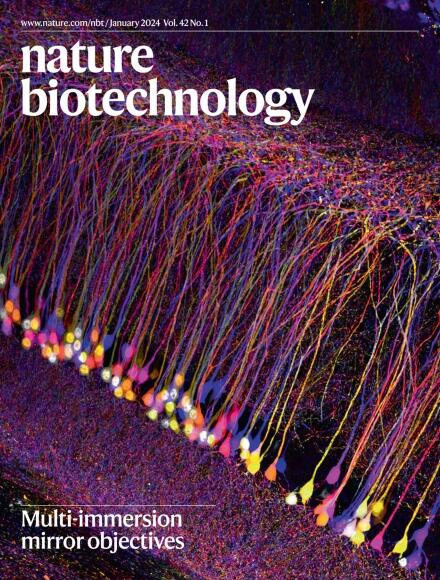基于深度学习的抗菌化合物虚拟筛选。
IF 41.7
1区 生物学
Q1 BIOTECHNOLOGY & APPLIED MICROBIOLOGY
引用次数: 0
摘要
耐多药细菌的增加强调了迫切需要额外的抗生素。在这里,我们将小分子高通量筛选与基于深度学习的虚拟筛选方法相结合,以发现新的抗菌化合物。我们针对致敏大肠杆菌菌株筛选了约200万个小分子,产生了数千个命中。我们使用这些数据来训练深度学习模型GNEprop来预测抗菌活性,回顾性地验证了分布外泛化和活性悬崖预测方面的鲁棒性。虚拟筛选了超过14亿种可合成化合物,确定了潜在的候选化合物,其中82种对同一菌株具有抗菌活性,比用于训练的高通量筛选实验的命中率提高了90倍。许多新发现的化合物表现出与已知抗生素的高度不同,效力超出训练菌株和选择性。生物学特性确定了特定的、经过验证的靶点,为进一步探索抗生素发现指明了有希望的途径。本文章由计算机程序翻译,如有差异,请以英文原文为准。
Deep-learning-based virtual screening of antibacterial compounds.
The increase in multidrug-resistant bacteria underscores an urgent need for additional antibiotics. Here, we integrate small-molecule high-throughput screening with a deep-learning-based virtual screening approach to uncover new antibacterial compounds. We screen ~2 million small molecules against a sensitized Escherichia coli strain, yielding thousands of hits. We use these data to train a deep learning model, GNEprop, to predict antibacterial activity, retrospectively validating robustness with respect to out-of-distribution generalization and activity cliff prediction. Virtual screening of over 1.4 billion synthetically accessible compounds identifies potential candidates, of which 82 exhibit antibacterial activity on the same strain, illustrating a 90-fold improved hit rate over the high-throughput screening experiment used for training. Many newly identified compounds exhibit high dissimilarity to known antibiotics, potency beyond the training bacterial strain and selectivity. Biological characterization identifies specific, validated targets, indicating promising avenues for further exploration in antibiotic discovery.
求助全文
通过发布文献求助,成功后即可免费获取论文全文。
去求助
来源期刊

Nature biotechnology
工程技术-生物工程与应用微生物
CiteScore
63.00
自引率
1.70%
发文量
382
审稿时长
3 months
期刊介绍:
Nature Biotechnology is a monthly journal that focuses on the science and business of biotechnology. It covers a wide range of topics including technology/methodology advancements in the biological, biomedical, agricultural, and environmental sciences. The journal also explores the commercial, political, ethical, legal, and societal aspects of this research.
The journal serves researchers by providing peer-reviewed research papers in the field of biotechnology. It also serves the business community by delivering news about research developments. This approach ensures that both the scientific and business communities are well-informed and able to stay up-to-date on the latest advancements and opportunities in the field.
Some key areas of interest in which the journal actively seeks research papers include molecular engineering of nucleic acids and proteins, molecular therapy, large-scale biology, computational biology, regenerative medicine, imaging technology, analytical biotechnology, applied immunology, food and agricultural biotechnology, and environmental biotechnology.
In summary, Nature Biotechnology is a comprehensive journal that covers both the scientific and business aspects of biotechnology. It strives to provide researchers with valuable research papers and news while also delivering important scientific advancements to the business community.
 求助内容:
求助内容: 应助结果提醒方式:
应助结果提醒方式:


